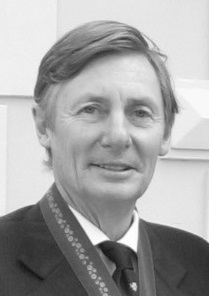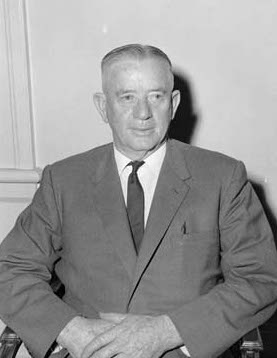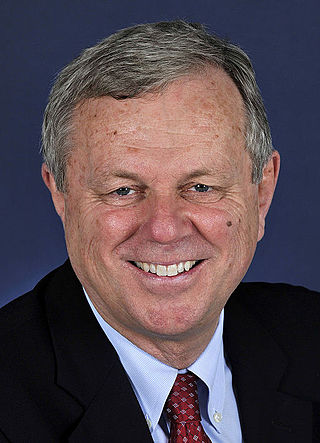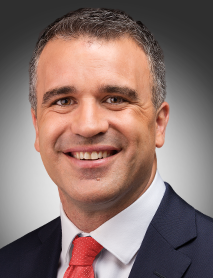Related Research Articles

The House of Assembly, or lower house, is one of the two chambers of the Parliament of South Australia. The other is the Legislative Council. It sits in Parliament House in the state capital, Adelaide.

The Division of Boothby is an Australian federal electoral division in South Australia. The division was one of the seven established when the former Division of South Australia was redistributed on 2 October 1903 and is named after William Boothby (1829–1903), the Returning Officer for the first federal election.
Since 1970, the South Australian House of Assembly — the lower house of the Parliament of South Australia — has consisted of 47 single-member electoral districts consisting of approximately the same number of enrolled voters. The district boundaries are regulated by the State Electoral Office, according to the requirements of the South Australian Constitution and are subject to mandatory redistributions by the South Australian Electoral Districts Boundaries Commission in order to respond to changing demographics.

Adelaide is a single-member electoral district for the South Australian House of Assembly. The 22.8 km² state seat of Adelaide currently consists of the Adelaide city centre including North Adelaide and suburbs to the inner north and inner north east: Collinswood, Fitzroy, Gilberton, Medindie, Medindie Gardens, Ovingham, Thorngate, Walkerville, most of Prospect, and part of Nailsworth. The federal division of Adelaide covers the state seat of Adelaide and additional suburbs in each direction.

Elder is a single-member electoral district for the South Australian House of Assembly. It is named after nineteenth-century businessman and philanthropist Sir Thomas Elder. Elder is an 18.3 km² suburban electorate in Adelaide's inner south, taking in the suburbs of Clapham, Clovelly Park, Colonel Light Gardens, Cumberland Park, Daw Park, Hawthorn, Lower Mitcham, Melrose Park, Mitchell Park, Panorama, Pasadena, St Marys, Tonsley, and Westbourne Park.

Waite is a single-member electoral district for the South Australian House of Assembly. Named after Peter Waite, a 19th century entrepreneur and philanthropist, it covers 75.4 km² of suburbs and foothills in Adelaide's inner south-east, taking in the suburbs of Belair, Blackwood, Brown Hill Creek, Coromandel East, Coromandel Valley, Crafers West, Craigburn Farm, Eden Hills, Glenalta, Hawthorndene, Kingswood, Lynton, Mitcham, Netherby, Springfield, Torrens Park, Urrbrae as well as part of Upper Sturt.

Torrens is a single-member electoral district for the South Australian House of Assembly. Located along the River Torrens, it is named after Sir Robert Richard Torrens, a 19th-century Premier of South Australia noted for being the founder of the "Torrens title" land registration system. Torrens is an 18.8 square kilometres (7.3 sq mi) suburban electorate in Adelaide's north-east. It includes the suburbs of Gilles Plains, Greenacres, Hampstead Gardens, Hillcrest, Holden Hill, Klemzig, Manningham, Oakden, Vale Park, Valley View and Windsor Gardens.

Port Adelaide is a single-member electoral district for the South Australian House of Assembly. Named after Port Adelaide, which it surrounds, it is a 118.8 km² suburban and industrial electorate on Adelaide's Lefevre Peninsula, and stretches east toward Adelaide's northern suburbs. It contains a mix of seaside residential areas, wasteland and industrial regions. In addition to its namesake suburb of Port Adelaide, the district includes the suburbs of Birkenhead, Bolivar, Cavan, Dry Creek, Ethelton, Exeter, Garden Island, Gepps Cross, Gillman, Glanville, Globe Derby Park, Largs Bay, Largs North, New Port, North Haven, Osborne, Ottoway, Outer Harbor, Peterhead, Semaphore, Semaphore South, St Kilda, Taperoo, Torrens Island, Wingfield, as well as part of Rosewater.
State elections were held in South Australia on 11 December 1993. All 47 seats in the South Australian House of Assembly were up for election. The incumbent Australian Labor Party led by Premier of South Australia Lynn Arnold was defeated by the Liberal Party of Australia led by Leader of the Opposition Dean Brown. The Liberals won what is still the largest majority government in South Australian history.
The Playmander was a gerrymandering system, a pro-rural electoral malapportionment in the Australian state of South Australia, which was introduced by the incumbent Liberal and Country League (LCL) government in 1936, and remained in place for 32 years until 1968.

State elections were held in South Australia on 6 November 1982. All 47 seats in the South Australian House of Assembly were up for election. The incumbent Liberal Party of Australia led by Premier of South Australia David Tonkin was defeated by the Australian Labor Party led by Leader of the Opposition John Bannon.

State elections were held in South Australia on 15 September 1979. All 47 seats in the South Australian House of Assembly were up for election. The incumbent Australian Labor Party led by Premier of South Australia Des Corcoran was defeated by the Liberal Party of Australia led by Leader of the Opposition David Tonkin.

State elections were held in South Australia on 17 September 1977. All 47 seats in the South Australian House of Assembly were up for election. The incumbent Australian Labor Party led by Premier of South Australia Don Dunstan won a fourth term in government, defeating the Liberal Party of Australia led by Leader of the Opposition David Tonkin.

The 1968South AustralianState election was held in South Australia on 2 March 1968. All 39 seats in the South Australian House of Assembly were up for election; 38 of the 39 contests were won by candidates from Australia's two major political parties. The incumbent Australian Labor Party and the Liberal and Country League both won 19 seats. The sole independent candidate to win a race, Tom Stott of the Ridley electorate, joined with the LCL's 19 seats to form a coalition government that held a 20 to 19 majority, thus defeating the Dunstan Labor government.

State elections were held in South Australia on 6 March 1965. All 39 seats in the South Australian House of Assembly were up for election. The incumbent Liberal and Country League led by Premier of South Australia Thomas Playford IV, in power since 1938, was defeated by the Australian Labor Party led by Leader of the Opposition Frank Walsh.

The 2010 South Australian state election elected members to the 52nd Parliament of South Australia on 20 March 2010. All seats in the House of Assembly or lower house, whose current members were elected at the 2006 election, and half the seats in the Legislative Council or upper house, last filled at the 2002 election, became vacant.

State elections were held in South Australia on 3 March 1962. All 39 seats in the South Australian House of Assembly were up for election. The incumbent Liberal and Country League led by Premier of South Australia Thomas Playford IV defeated the Australian Labor Party led by Leader of the Opposition Frank Walsh.
Baudin was an electoral district of the House of Assembly in the Australian state of South Australia from 1977 to 1993. It was in the southern suburbs of Adelaide. In 1977, the polling places were: Christie Downs, Christies Beach, Hackham, Hackham East, Hallett Cove, Moana, Noarlunga, O'Sullivan Beach, Port Noarlunga and Seaford.

The 2018 South Australian state election to elect members to the 54th Parliament of South Australia was held on 17 March 2018. All 47 seats in the House of Assembly or lower house, whose members were elected at the 2014 election, and 11 of 22 seats in the Legislative Council or upper house, last filled at the 2010 election, were contested. The record-16-year-incumbent Australian Labor Party (SA) government led by Premier Jay Weatherill was seeking a fifth four-year term, but was defeated by the opposition Liberal Party of Australia (SA), led by Opposition Leader Steven Marshall. Nick Xenophon's new SA Best party unsuccessfully sought to obtain the balance of power.

The 2022 South Australian state election was held on 19 March 2022 to elect members to the 55th Parliament of South Australia. All 47 seats in the House of Assembly, and half the seats in the Legislative Council were up for re-election.
References
- ↑ "Metropolitan Polling Places". The Advertiser . Adelaide. 17 March 1938. p. 15. Retrieved 18 December 2015– via National Library of Australia.